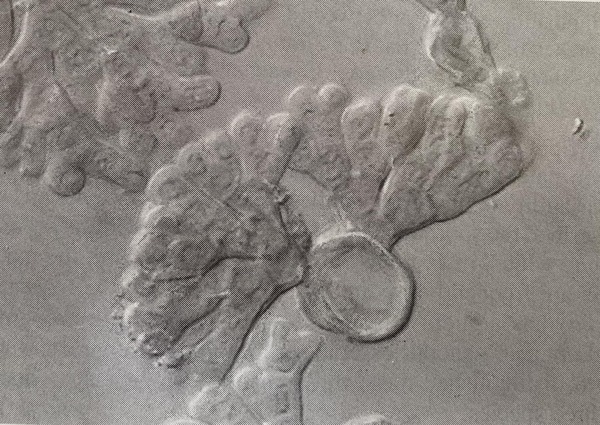Cheiromycina reimeri Printzen
Nova Hedwigia, 84, 1-2: 262, 2007
Synonyms:
Distribution:
Description: Thallus crustose, thinly episubstratic, ochraceous to grey-green, effuse, smooth to slightly rimose, c. 30 µm thick. Pseudocortex 10-15 µm high, of hyaline, subglobose cells. Conidiomata sporodochial, superficial, grey to grey-white but often eroded and appearing white, flattened to slightly convex, usually with an irregularly wrinkled surface, initially single but later often confluent, oval-ellipsoid, 0.25-0.9 x 0.25-0.5 mm, 50-60 µm high. Conidiogenous cells terminal or lateral, colourless, globose or broadly ellipsoid, (6.5-)10(-12) x (5-)9(-12) µm, distinctly larger than conidial cells, the wall 1-15 µm thick. Conidia palmate, broadly fan-shaped, (17-)16(-37) x (14.5)19.5(-24) µm, consisting of a swollen, globose-truncate basal cell from which 2-4-dichotomously branched, divergent, 2-dimensional branches arise, the terminal branches short, with an average of (1-)1.5-2.1(-3) cells, smooth-walled. Photobiont chlorococcoid. Spot tests: thallus K-, C-, KC-, P-, UV-. Chemistry: without lichen substances. Note: a recently-described species growing on bark and wood, known from several sites in Central and Eastern Europe, Turkey and the Russian Far-East. To be looked for in Italy.
Growth form: Crustose
Substrata: bark
Photobiont: green algae other than Trentepohlia
Reproductive strategy: mainly asexual, by conidia and thalloconidia

Predictive model
Growth form: Crustose
Substrata: bark
Photobiont: green algae other than Trentepohlia
Reproductive strategy: mainly asexual, by conidia and thalloconidia

Predictive model
 Index Fungorum
Index Fungorum
 GBIF
GBIF


